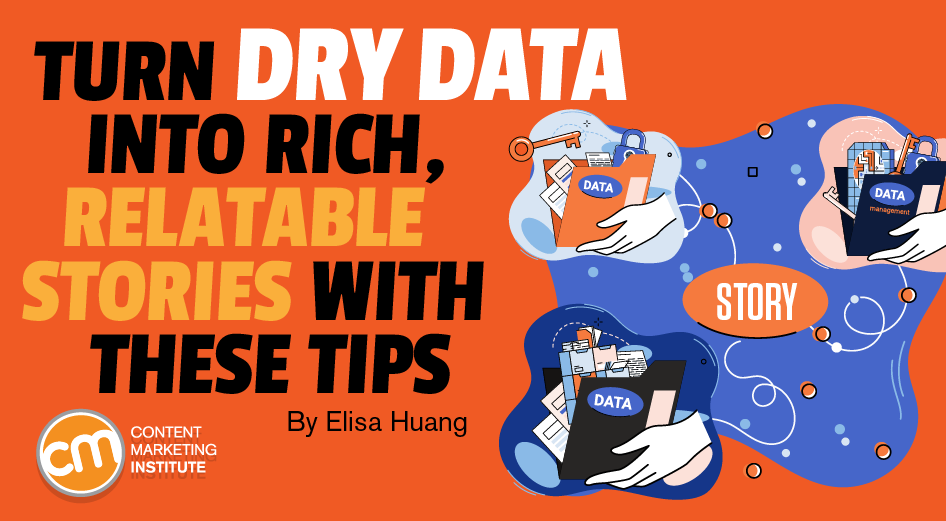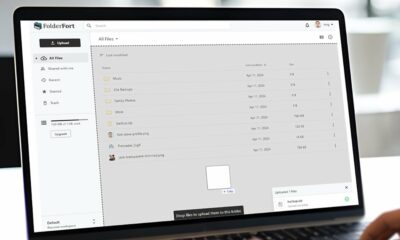MARKETING
Turn Dry Data Into Rich, Relatable Stories With These Tips

One of the best things about being a content writer is that no matter the topic, we have a lot of insights at our fingertips. You can use it to provide perspective, validate ideas, give more context, etc.
Of course, all that data also is one of the worst things for a content writer. How do you dig out the story behind the numbers without getting buried under the mountains of facts and stats?
At Stacker, we shape our newswire stories around data and use it to drive all our storytelling. We’ve found the best-performing articles – regardless of topic – share similar strategic data-centered approaches. Here’s some of what we learned by creating data-driven content that engages audiences and earns links from other sites.
Go local and meet readers where they are
A story tailored to a region, state, or city feels instantly relatable and captures the attention of readers’ living in that geographic area. In fact, 71% of our publishing partners say their most-prioritized stories have local news angles.
Narrowing data-driven stories to a state or metro level may seem limiting. Content writers think the more hyper-focused a story, the smaller the reach. But presenting localized data doesn’t have to be an either-or choice.
#Content writers can use data to give stories both a hyper-local and national appeal, says @Stacker’s Elisa Huang via @CMIContent. Click To Tweet
CNBC didn’t make a choice in their story about how much the top 1% of U.S. households earn each year. It mentioned the broadest geographic figure – the national number ($597,815 a year on average). Then it detailed the average for each state, from West Virginia’s $350,000 to Connecticut’s $896,490.

CNBC gives its data-driven story national and hyper-local appeal.
One of our top-performing stories for a brand partner looked at the rural hospitals most at risk of closing. It broke down the status of rural hospitals over 43 states, then distilled local versions that would feel most meaningful for targeted audiences from California to New York.
Takeaway: Data at a state- or city-level can have local appeal while still connecting to a newsy national trend. It also opens up your content’s promotion potential to national and local news sites.
HANDPICKED RELATED CONTENT:
Host a hometown showdown by comparing data
People love comparing their corner of the world with others. A recent Redfin report found an unprecedented 8% of U.S. homes are now worth at least $1 million. The story didn’t just reveal the top five or 10 cities but ranked 99 so readers can see how million-dollar neighborhoods compare to other million-dollar neighborhoods.
In this snippet of the comparison content, six of the cities are in California – half of which have a 50% or greater share of homes worth at least $1 million in 2022. Other cities at the top of the list include Honolulu, Seattle, and New York City.

A snippet from Redfin’s story that ranks home price data by state.
When people can see their cities’ results juxtaposed with others, it puts the information into a more powerful context. Ranking stories, such as states with the lowest income taxes or the cities with the highest rent, often perform well.
Ranking stories – where readers can see how their locale compares to others – perform well, says @Stacker’s Elisa Huang via @CMIContent. Click To Tweet
Writing headlines with phrases like “highest-to-lowest,” “biggest increase,” and “lowest-priced” also signals to readers the underlying numbers-driven methodology used in the content. They not only reinforce the data-first approach, but they build confidence in the prospective reader that the content is powered by data, not opinion.
Takeaway: Use data-driven rankings to tap into readers’ curiosity by showing how their region compares with others in timely trends.
HANDPICKED RELATED CONTENT: 100+ Content Marketing Trends and Predictions for Success in 2022
Let time tell the story by thinking past the latest data
Many content creators understandably focus on building a story around the latest numbers or study results to be relevant and trendy.
But pulling in a bit of history through older data sets can add a richer dimension to the storytelling. Not only does historic information add more context to the latest data or breaking news, but it helps the piece become more evergreen. Long after a news headline fades, readers may be still interested in the richly layered content.
Historical data can lead to a more relevant story today, says @Stacker’s Elisa Huang via @CMIContent. #ContentMarketing Click To Tweet
We did this with a story about how commuting in America changed over the past 50 years.

Stacker used historical data to highlight how the American commute has changed over time.
Without adding historical data, it would have been impossible to highlight that the average length of work commutes has increased 10% since 2006. This contextualization offers a perspective that wouldn’t be possible by only detailing the current average commute time.
Self, a credit-building app, mapped poverty levels state by state using data from the U.S. Census Bureau. Instead of just mapping the country with the latest poverty rates for each state, the story also charted the rates over time. With this valuable context, readers could see how states’ poverty rates rose and sank after natural disasters, financial booms and busts, and ultimately COVID-19, giving a more thoughtful story that identified contributors to those poverty rate changes.
Georgetown University’s Center on Education and the Workforce tackled the value of higher education with another data-centered approach: It looked at the salaries of college graduates in 10-year increments since their enrollment. The findings, picked up by Yahoo! Finance and others, assessed how many decades it took for a student to earn a return on investment on the cost of their college.
Takeaway: Using data over time can add richer context to what numbers mean today – and make the content feel more evergreen.
Liven up humdrum stories with different data filters
Data-driven stories emphasize relatability – they can connect better with your audience and often present a new angle that stands out from your same old story approaches. You can find local angles, make a comparison, and use historical data to provide unique context.
Unsure what data to start with? Poke around government sites like the U.S. Bureau of Labor Statistics and the Department of Education. They can be great places to dig into and see how national-level data looks when filtered across industries, career fields, household incomes, metropolitan areas, and more. By adding focused data to your content, you can tell stories that feel more personalized – and meaningful – to your readers.
Cover image by Joseph Kalinowski/Content Marketing Institute


















You must be logged in to post a comment Login